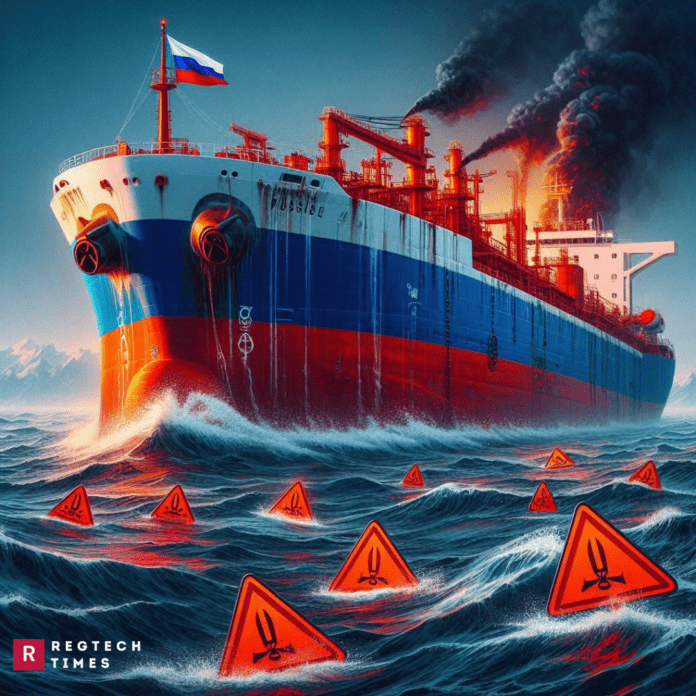Mounting Sanctions on Oil Tankers
Russia is facing a severe oil transportation crisis as new restrictions disrupt its ability to move crude oil to global markets. On January 10, additional sanctions targeted 161 oil tankers involved in shipping Russian crude, adding to previous restrictions already in place. These measures have significantly impacted the cost and efficiency of Russia’s oil trade, making it harder to sustain export volumes.
Over the past year, sanctions have gradually expanded, affecting a growing number of vessels. As of now, 265 ships have been blacklisted. Out of the 435 tankers that transported Russian crude in 2024, approximately 26% are now sanctioned. However, when vessels sanctioned by European and British authorities are included, the number rises to 37%. Since many of these ships carried multiple shipments throughout the year, the true impact is even larger—about 57% of Russia’s total seaborne crude exports have been affected by these restrictions.
The oil industry relies heavily on a smooth and predictable supply chain, and disruptions in tanker availability create significant logistical hurdles. With more than half of its fleet impacted by sanctions, Russia is struggling to find reliable alternatives. While some tankers continue to operate, they face increased scrutiny, higher costs, and delays that make transporting oil much more complicated.
Soaring Shipping Costs and Delays
The most immediate impact of these sanctions is seen in the rising cost of transporting Russian crude. The price of securing tankers to carry oil from Russia to Asian markets has skyrocketed. Freight rates have surged nearly 50% since the latest sanctions took effect. The gap between the price of Russian oil at its export terminals and its final delivered price in Asia—a key indicator of shipping costs—has also widened significantly.
The cost of shipping a barrel of Russian crude from the Black Sea to India has now reached $10 per barrel, while transporting oil from the Baltic region costs as much as $13 per barrel. Although these rates are not yet at the peak levels seen during earlier phases of sanctions, they have jumped by 48% since January 10. Higher transportation costs force Russia to offer deeper discounts on its crude, which in turn reduces its overall revenue.
Delays have also become a growing issue. Some tankers are idling near Russian ports, unable to secure necessary approvals or insurance to proceed. Others are waiting outside major terminals, such as those in China, rather than completing their deliveries on schedule. In an effort to bypass restrictions, some shipments are being transferred to larger storage vessels off the Russian coast before being sent to their final destinations. While this workaround allows Russia to continue exporting crude, it adds extra layers of complexity and cost to the process.
Struggles of Russia’s Shadow Fleet
To cope with Western restrictions, Russia has relied on a fleet of older, privately owned tankers operating outside conventional shipping networks. This so-called “shadow fleet” includes vessels that are often uninsured or only minimally covered, making them difficult to track and regulate. These tankers have played a crucial role in sustaining Russia’s oil exports, but the latest sanctions are making it increasingly difficult for them to operate.
Many of these ships are facing new barriers when navigating key shipping routes. Some ports and maritime authorities are refusing to service vessels that lack proper insurance or registration, adding another layer of difficulty. The availability of critical services such as maintenance, refueling, and repairs has also been reduced for sanctioned ships, increasing the risk of operational failures.
Despite these obstacles, Russia has managed to keep oil flowing to international markets. However, the challenges are mounting. The growing list of sanctioned vessels, rising freight costs, and increasing delays are putting significant strain on the country’s oil trade. If these logistical bottlenecks continue to worsen, Russia could face even greater difficulties in maintaining its export levels, further complicating its economic landscape.


